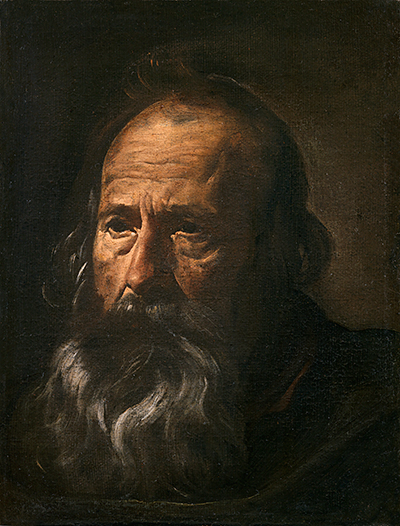Head of an Apostle
Diego Velazquez displays his mastery of facial portraiture and lighting in his painting entitled Head of an Apostle

The ageing features of the apostle gives the artist an opportunity to add greater textures to the facial elements and then provide shadowed areas to exaggerate them further. His portraits of younger, more beautiful subjects would have much flatter dimensions, where the impact of time was yet to leave its mark.
This painting was completed in 1620, and is therefore from the very early stages of Velazquez's career. He was during this time under the direction of Francisco Pacheco, who also featured as a portrait subject himself.
The Museo del Prado holds this artwork as part of the finest collection of Diego Velazquez paintings in the world. Las Meninas remains the biggest draw from his career and its reputation remains impressively strong.
There are many art historians who believe that this small canvas was originally part of a larger composition before being cropped out. There is no clear evidence to date that backs up this claim, however, and so it remains a controversial opinion. The relatively small size of this painting, at 29cm by 38cm, is perhaps the main reason for this theory.
Diego Velazquez was clearly not the only artist to display portraits of apostles within his work, with other famous depictions contributed by the likes of Masaccio, Leonardo da Vinci, Rembrandt and Giotto. Religious themes can be seen throughout the Renaissance and Baroque periods, underlining the significance of religion within society at that time.
The lighting used by this Spanish master reminds some of the work of Rembrandt or Caravaggio - abrupt contrasts between the light and dark tones which helps to focus the eye on the subject and avoid distractions.